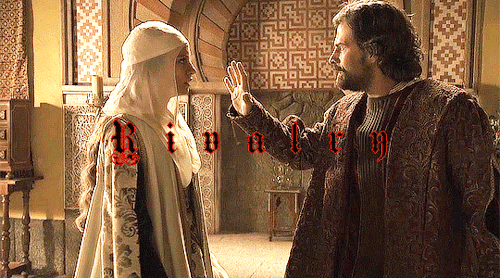latristereina: They married in 1469, he aged seventeen, she a year or so older. Immediately Isabella
latristereina:They married in 1469, he aged seventeen, she a year or so older. Immediately Isabella was disinherited by her brother, Henry IV of Castile, in favour of his doubtfully legitimate daughter, Joanna. After the death of Henry IV in 1474, a civil war broke out between niece and aunt. This resulted in Isabella’s victory and proclamation as Queen of Castile, and Joanna’s retreat into a nunnery. Five years later, Ferdinand succeeded his father in Aragon. Ferdinand was the son of John II by his second marriage, and only after two deaths, both rumoured to be by poison, was he delivered the throne. Having fought everybody else to a standstill, Ferdinand and Isabella then threatened to come to blows themselves. He was determined to be King indeed in Castile; she was equally resolute to preserve her rights as Queen Regnant. Finally their quarrel was submitted to formal arbitration. This established the principle of co-sovereignty between the two. Justice was executed jointly when they were together and independently if they were apart. Both their heads appeared on the coinage and both their signatures on royal charters, while the seals included the arms of both Castile and Aragon. And these were quartered, as a gesture of equality, rather than Ferdinand’s arms of Aragon ‘impaling’ Isabella’s arms of Castile, as was usual between husband and wife. Such power-couple equality was unusual enough in a medieval royal marriage. But, in fact, Isabella was the first among equals since, with the exception of the agreed areas of joint sovereignty, the administration of Castile was reserved to her in her own right. Not surprisingly, Ferdinand jibbed. But he soon submitted and, united, the pair carried all before them. For, despite Ferdinand’s four bastards by as many different mothers, he and his wife were genuinely, even passionately, in love. But even in this there was rivalry. ‘My Lady,’ one of Ferdinand’s letters to the Queen begins, ‘now it is clear which of us two loves best.’ But they were in love with their growing power even more than with each other.- David Starkey, Six Wives: The Queens of Henry VIII -- source link
#history#15th century#16th century#isabel tve

